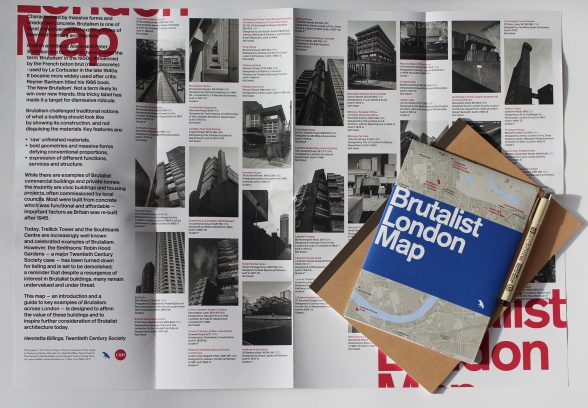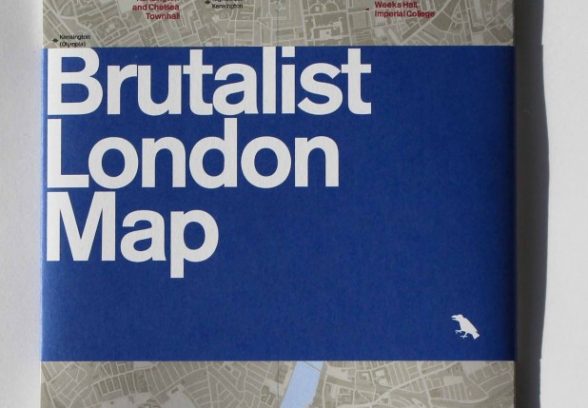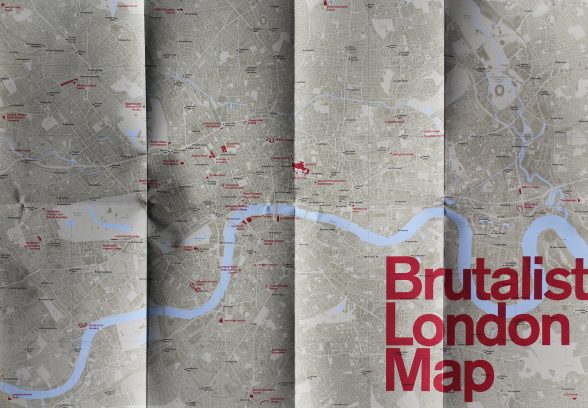This website uses cookies
This website uses cookies to enable it to function properly and to analyse how the website is used. Please click 'Close' to accept and continue using the website.





C20 has collaborated with publisher Blue Crow Media to produce a map of Brutalist London, the first in a new series of architectural guides. The two-sided folding map includes an introduction by C20’s Senior Conservation Adviser Henrietta Billings and details of over 50 leading examples of Brutalist buildings, photographed by Simon Phipps (better known to Twitter-followers as @new_brutalism).
The guide features examples of Brutalist architecture from the well-known – the Barbican, National Theatre, Southbank Centre and Trellick Tower – to lesser known buildings like the Elephant and Rhinocerous Pavilion at London Zoo, Hyde Park Barracks and Keeling House in Bethnal Green. Details for each building include the location, date, the architect or practice responsible and listing status.
Henrietta Billings said: “This map is a fantastic opportunity to highlight some of London’s boldest and exciting post war buildings. Ten years ago this style of architecture was completely out of fashion, but now more and more people can see what’s great about these buildings. The map will help you find more examples than you ever knew existed.”
British architects Alison and Peter Smithson are believed to have coined the term Brutalism in the 1950s, influenced by the French béton brut (raw concrete) – used by Le Corbusier in the late 1940s. Brutalism challenged traditional notions of what a building should look like by showing its construction and not disguising materials. Most were built from concrete which was functional and affordable – important factors as Britain was rebuilt after 1945.
This style provoked strong reactions with heated arguments over the decades about whether these buildings were concrete eyesores or design icons, a debate that continues. In recent years the tide of public opinion seems to be moving in their favour. The National Trust recently offered in-depth tours of Brutalist buildings including the Southbank Centre, Park Hill, in Sheffield, and the University of East Anglia, in Norwich.
But inclusion on the map doesn’t mean the buildings are saved for posterity. Both Robin Hood Gardens and Hyde Park Barracks – both major Twentieth Century Society campaigns – have been controversially turned down for listing and are threatened with demolition.The Brutalist London Map is designed to affirm the value of these buildings and to inspire further consideration of Brutalist architecture today.
Copies of the map are available from Blue Crow Media for £8 (plus 62p shipping), or from Foyles and other good bookshops.

Become a C20 member today and help save our modern design heritage.